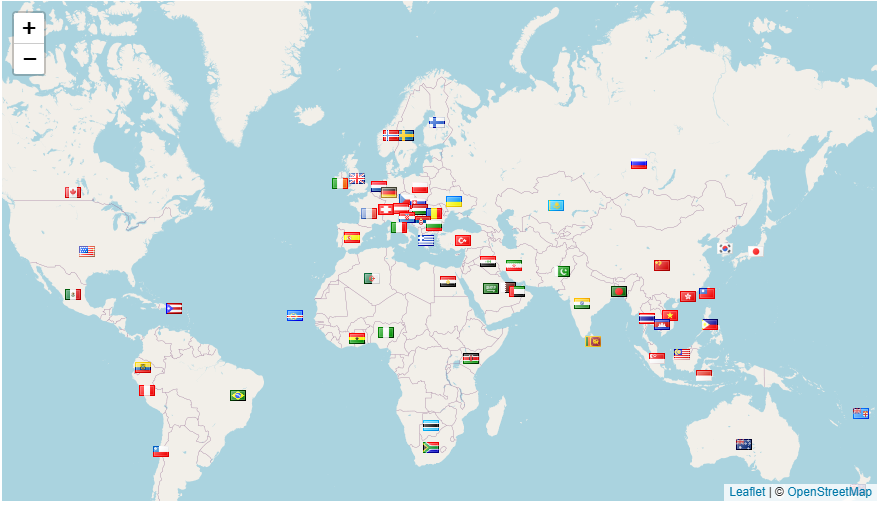Optimization of Making Edible Film from Glucomannan Flour with the Addition of CaCO3, Gelatin, Glycerol, Coconut Oil, and Tea Tree Oil
DOI:
https://doi.org/10.70822/journalofevrmata.vi.3Keywords:
edible film, independent variable, product test, pareto chart, optimumAbstract
The increase in population causes the level of basic needs to increase, one of which is in terms of food. Where mostly, the food industry uses petroleum-based plastic packaging, the use of these materials can contaminate food due to the nature of the chemical substances that are easily mixed with the packaged products. Therefore, it is necessary to have packaging technology that is safe and does not damage the environment, for example edible film (McHugh and Krochta 1994). The process of making edible films is carried out by mixing the independent variables, namely the concentration of CaCO3, gelatin, coconut oil, and glycerol and then testing the product in the form of tensile strength, elongation, water vapor transmission rate, and thickness. The first objective of this study is to determine the effect of each independent variable on tensile strength, elongation, water vapor transmission rate, thickness, biodegradation, and the number of microbes. Second, obtaining the optimum composition through RSM. The optimum results obtained from RSM resulted in the composition of each variable and response, namely gelatin 7 grams, CaCO3 0.8 grams, coconut oil 3 ml, and glycerol 2 ml and resulted in a minimum thickness response of 0.1 mm, minimum water vapor transmission rate of 1 g.m2 /day, maximum tensile strength of 86 kgf/cm2 , and maximum elongation of 43%.
References
R. M. S. Cruz et al., Bioplastics for Food Packaging: Environmental Impact, Trends and Regulatory Aspects, Foods, vol. 11, no. 19. 2022.
E. Díaz-Montes, R. Castro-Muñoz, Edible films and coatings as food-quality preservers: An overview, Foods, vol. 10, no. 2. 2021.
M. E. Kramer, Structure and Function of Starch-Based Edible Films and Coatings, in Edible Films and Coatings for Food Applications, 2009.
S. Galus, J. Kadzińska, Food applications of emulsion-based edible films and coatings, Trends in Food Science and Technology, vol. 45, no. 2. 2015.
C. A. Campos, L. N. Gerschenson, S. K. Flores, Development of Edible Films and Coatings with Antimicrobial Activity, Food and Bioprocess Technology, vol. 4, no. 6. 2011.
M. Lacroix, Mechanical and Permeability Properties of Edible Films and Coatings for Food and Pharmaceutical Applications, in Edible Films and Coatings for Food Applications, 2009.
R. J. Kerekes, J. O. Heymer, J. D. McDonald, Refining pulp for tensile strength, Nord. Pulp Pap. Res. J., vol. 36, no. 4, 2021.
D. Gerogiorgis, S. Pistikopoulos, Book Review, Chem. Eng. Res. Des., vol. 84, no. 11, pp. 1087–1089, 2006.
P. C. Painter, M. M. Coleman, Essentials of Polymer Science and Engineering, Essentials of Polymer Science and Engineering. 2009.
R. Christensen, Analysis of variance, design, and regression: Linear modeling for unbalanced data, second edition. 2015.
J. Qi et al., Thermal degradation of gelatin enhances its ability to bind aroma compounds: Investigation of underlying mechanisms, Food Hydrocoll., vol. 83, 2018.
A. Jangchud, M. S. Chinnan, Peanut protein film as affected by drying temperature and pH of film forming solution, J. Food Sci., vol. 64, no. 1, 1999.
A. B. Prasetyo, E. Suprayitno, The Effect of Glycerol Plasticizer Concentration on Physical-Chemical Characteristics of Edible Film from Catfish Skin Gelatin (Pangasius sp.), Int. J. Sci. Res. Publ., vol. 11, no. 10, 2021.
Y. Darni, H. Utami, R. Septiana, R. A. Fitriana, COMPARATIVE STUDIES OF THE EDIBLE FILM BASED ON LOW PECTIN METHOXYL
WITH GLYCEROL AND SORBITOL PLASTICIZERS, J. Bahan Alam Terbarukan, vol. 6, no. 2, 2017.
J. Shen, Z. Song, X. Qian, F. Yang, Carboxymethyl cellulose/alum modified precipitated calcium carbonate fillers: Preparation and their use in papermaking, Carbohydr. Polym., vol. 81, no. 3, 2010.
S. N. Lesmana, T. I. P. S, N. Kusumawati, PENGARUH PENAMBAHAN KALSIUM KARBONAT SEBAGAI FORTIFIKAN KALSIUM TERHADAP SIFAT FISIKOKIMIA DAN ORGANOLEPTIK PERMEN JELI SUSU, J. Teknol. Pangan dan Gizi, vol. 7, no. 1, pp. 28–39, 2008.
M. Mikriukova, J. Lahti, J. Kuusipalo, Permeation of vegetable oils and slippery properties of extrusion coated paperboard, Packag. Technol. Sci., vol. 35, no. 5, 2022.
R. Arham, M. T. Mulyati, M. Metusalach, S. Salengke, Physical and mechanical properties of agar based edible film with glycerol plasticizer, Int. Food Res. J., vol. 23, no. 4, 2016.
F. Maruddin, R. Malaka, S. Baba, H. Amqam, M. Taufik, S. Sabil, Brightness, elongation and thickness of edible film with caseinate sodium using a type of plasticizer, in IOP Conference Series: Earth and Environmental Science, 2020, vol. 492, no. 1.
A. L. Charles, N. Motsa, A. A. Abdillah, A Comprehensive Characterization of Biodegradable Edible Films Based on Potato Peel Starch Plasticized with Glycerol, Polymers (Basel)., vol. 14, no. 17, 2022.
Downloads
Published
Issue
Section
License
Copyright (c) 2023 Zakijah Irfin, Dwina Moentamaria, Anugraheni Nur Arifa

This work is licensed under a Creative Commons Attribution 4.0 International License.







